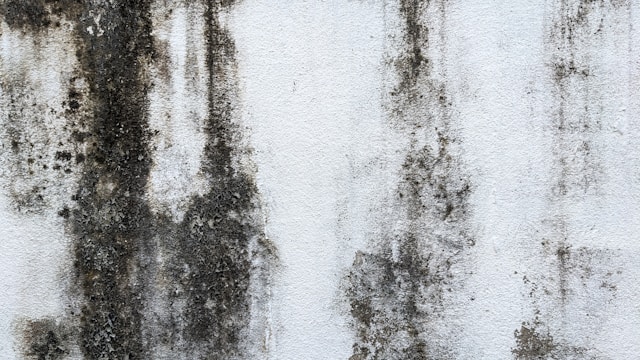Step-by-Step Breakdown of Alladin’s Mold Remediation Protocol Under California’s Health and Safety Code Section 26147
When addressing mold remediation, you first conduct an initial mold inspection to identify the extent of the issue and guarantee compliance with California’s Health and Safety Code Section 26147. Next, you establish containment procedures to prevent the spread of airborne mold, sealing off the contaminated area and setting up negative air pressure. After containment, you safely remove and clean mold-infested materials using EPA-approved biocides and HEPA systems, followed by thorough drying, testing, and obtaining legal clearance to guarantee the space is safe and compliant.

Initial Mold Inspection and Compliance Reporting
When you initiate the mold remediation process with Alladin Restoration Services, the first step involves a thorough visual inspection to identify any visible signs of mold. This is accompanied by air sampling to detect mold spores that may not be visible, ensuring a detailed assessment. All findings are meticulously documented to align with California’s disclosure laws and the Health and Safety Code Section 26147, providing you with a clear and compliant report.
Visual checks, air sampling, and documentation aligned with California disclosure laws
To safeguard compliance with California’s Health and Safety Code Section 26147, Alladin Restoration Services begins the mold remediation process with a thorough initial mold inspection. You will undergo visual checks and, if necessary, mold sampling and testing to assess indoor air quality. This process aligns with California mold disclosure laws. Post-remediation verification confirms a certificate of clearance, confirming the space is safe and compliant.
Containment Procedures to Prevent Airborne Mold Spread
When containing mold to prevent airborne spread, you will set up negative pressure chambers and sealed barriers to isolate the contaminated area. This involves deploying physical barriers like plastic sheeting and utilizing negative air pressure machines to keep mold spores from escaping. Additionally, you will use HEPA air scrubbers to capture microscopic mold spores and enforce the use of personal protective equipment (PPE) to guarantee safety during the remediation process.
Negative pressure chambers, sealed barriers, HEPA air scrubbers, and PPE enforcement
Establishing negative pressure chambers is the first critical step in Alladin’s mold remediation protocol. This creates mold containment zones, preventing the spread of mold spores. Sealed barriers are set up to isolate the affected area, and HEPA air scrubbers are used to purify the air. Alladin enforces PPE compliance, ensuring tenant safety during mold remediation, all in line with the IICRC S520 standard for mold abatement in CA.
Safe Removal and Cleaning of Mold-Infested Materials
When removing mold-infested materials, you must guarantee the process is safe and compliant. Alladin Restoration uses on-site disposal to eliminate contaminated materials immediately, employs EPA-registered biocides to effectively kill mold, and utilizes HEPA vacuums to control spore dispersal. This approach prevents further mold spread and safeguards both the environment and the health of occupants.
On-site disposal, EPA-registered biocides, and spore control via HEPA vacuums
In the meticulous process of mold remediation, Alladin Restoration Services emphasizes the critical steps of on-site disposal, the use of EPA-registered biocides, and spore control via HEPA vacuums. Under California Health and Safety Code Section 26147, Alladin’s teams guarantee safe on-site disposal of contaminated materials. They utilize EPA-registered biocides to effectively eliminate mold and employ HEPA vacuums for thorough mold spore control. This approach safeguards your health and property.
Final Drying, Testing, and Legal Clearance
To guarantee your property is completely mold-free, Alladin Restoration Services focuses on final drying, indoor air quality (IAQ) verification, and the issuance of a clearance certificate. They use high-powered dehumidifiers and industrial air movers to expedite the drying process, preventing any residual moisture that could lead to further mold growth. Once the area is dry and free of mold, Alladin conducts thorough testing to verify the air quality and issues a clearance certificate, guaranteeing compliance with California’s health and safety regulations.
Dehumidification, IAQ verification, and issuance of clearance certificate for compliance
Completing the mold remediation process involves several critical steps to guarantee compliance with California’s Health and Safety Code.
Dehumidification, IAQ Verification, and Clearance Certificate
After removing the mold, you need to:
- Use industrial dehumidifiers to lower moisture levels, preventing further mold growth.
- Conduct IAQ (Indoor Air Quality) verification to confirm airborne mold prevention using EPA-approved biocides and HEPA systems.
- Issue a clearance certificate, assuring mold regulation compliance in CA and providing documentation for insurance and regulatory standards.
This process safeguards occupant health and property value.
